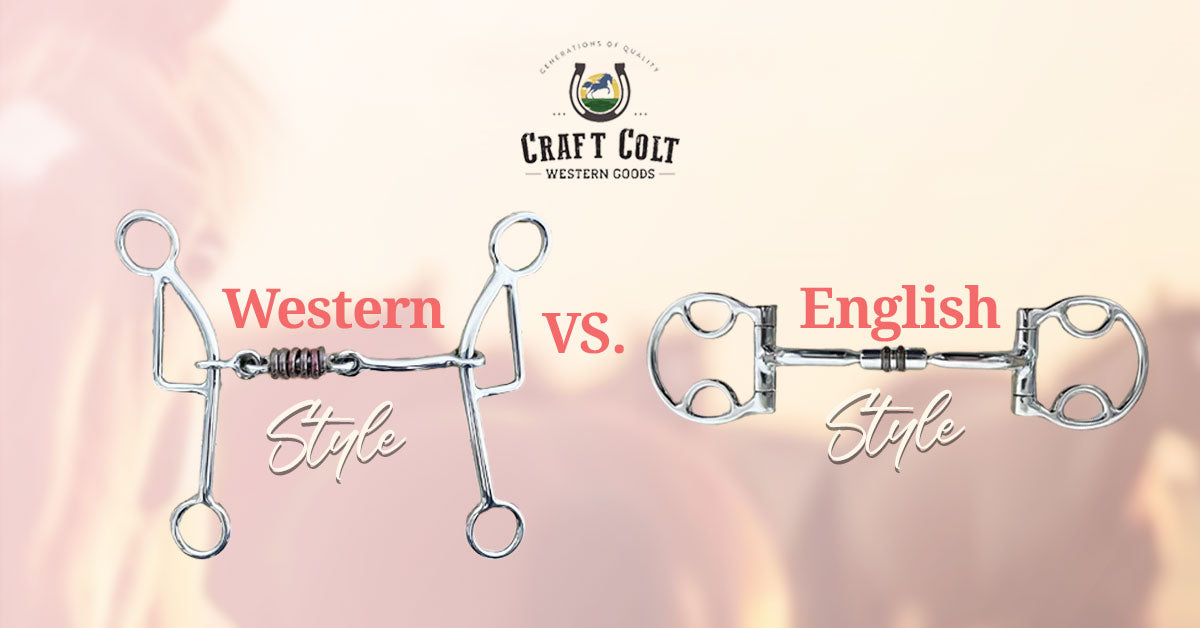
The Tell-Tale Signs of an Improperly Fitted Horse Bit
Table of Contents
A horse bit is a critical piece of riding equipment, serving as a primary communication tool between rider and horse. The fit, type, and size of the bit greatly influence the effectiveness of this communication, making it essential to ensure a proper fit for the comfort and performance of both the horse and rider.

Recognizing the Signs of an Ill-Fitting Horse Bit
Behavioral Indicators from the Horse
Common behavioral signs of discomfort include head tossing, excessive bit chewing, resistance to accepting the bit, drooling more than usual, and avoiding the bit altogether. These behaviors often indicate that the bit is causing discomfort or pain.
Physical Signs on the Horse
Look for physical evidence like marks, sores, or signs of discomfort in the horse's mouth, including rubbing or chafing at the corners. These can be clear indicators that the bit is not fitting correctly.
Changes in Riding Performance
An ill-fitting bit can result in difficulty responding to commands, inconsistent movement, or sudden changes in behavior during riding. This can disrupt the horse's performance and the rider's control.
Audible Indicators
Unusual noises such as grinding teeth or excessive mouth sounds when the bit is in use can be telltale signs. These noises often indicate discomfort or stress related to the bit.
Resistance to Bridling
If your horse shows reluctance or distress when being bridled, this could be a sign of discomfort with the bit, suggesting that it might not be the right fit or type.
Understanding the Causes of Ill-Fitting Horse Bits
Choosing the correct bit size and type is crucial for your horse's comfort and responsiveness. A bit that's too large can slide sideways, causing discomfort and confusion, while a bit that's too small can pinch the horse's mouth, leading to resistance and behavioral issues. Different types of bits, like snaffles, curbs, and gags, exert varying pressures and are suitable for different levels of training and riding styles. Understanding the mechanics of each bit type and how they interact with your horse's mouth anatomy is key to selecting the right one.
Inappropriate Bit for Horse's Training Level
Selecting a bit that matches your horse's training level is as important as matching it to the rider's experience. For instance, a young or green horse may require a gentler bit like Western Style Stainless Steel Horse Bit - Sweet Iron Spring Design that allows for simple, clear communication, whereas a more advanced horse might respond well to a bit that allows for more nuanced commands. A mismatch in this area can result in confusion, resistance, and even regression in the horse's training.
The Impact of an Ill-Fitting Horse Bit on Riding
Communication Challenges Between Horse and Rider
An ill-fitting bit disrupts the subtle communication channel established through the reins. This miscommunication can manifest as a horse ignoring cues, overreacting to commands, or becoming dull to the rider's instructions. It's essential to recognize that a horse's response to commands is often directly correlated to the comfort and fit of the bit.
Safety Risks for Horse and Rider
The consequences of an improperly fitted bit extend beyond discomfort. It can lead to dangerous situations where the rider loses control, especially in high-stakes environments like jumping courses or crowded arenas. A horse reacting unpredictably due to bit discomfort can pose a serious risk to both the horse and rider, as well as others in the vicinity.
Steps to Ensure a Proper Bit Fit
Measuring for the Right Bit Size
Accurate measurement is critical in selecting the right bit. This involves measuring the width of the horse's mouth, considering the space needed for the bit rings or shanks, and factoring in the mouthpiece's thickness. Tools like a bit sizer or a simple string can be used for this purpose, ensuring a more precise fit.
Trial and Error: Finding the Right Bit
Selecting the perfect bit often requires a period of trial and error. Observing your horse's reaction to different bits during riding sessions is invaluable. Look for signs of comfort, such as a relaxed jaw and willingness to accept the bit, as well as signs of discomfort like head shaking or resistance.
When to Seek Professional Help
Consulting with seasoned trainers, experienced riders, veterinarians, or equine dentists can provide deep insights into the bit selection process. These professionals can offer advice based on the horse's anatomy, behavior, and training level, helping you avoid common pitfalls and ensuring a more informed decision.
Conclusion
An appropriately fitting horse bit is a cornerstone of effective and safe horse riding. Recognizing the signs of discomfort and understanding the implications of an ill-fitting bit are essential skills for every rider. By paying close attention to your horse's behavior and performance, and seeking professional guidance when needed, you can ensure a harmonious and enjoyable riding experience for both you and your horse. Remember, the right bit fit is not just about comfort; it's about effective communication, safety, and enhancing the overall riding experience.



